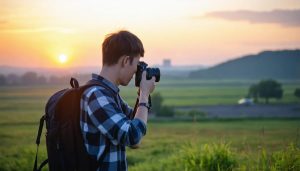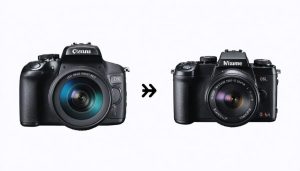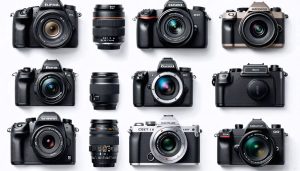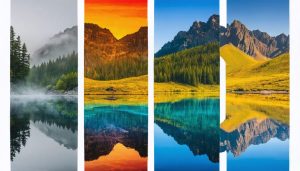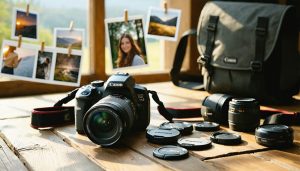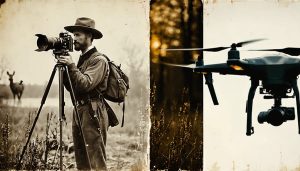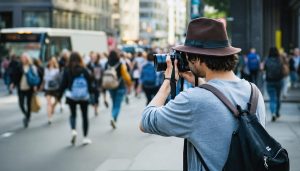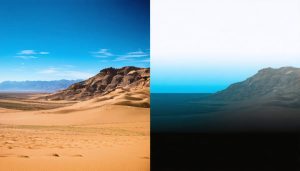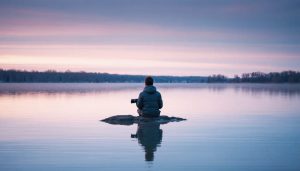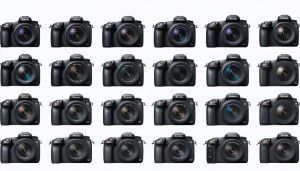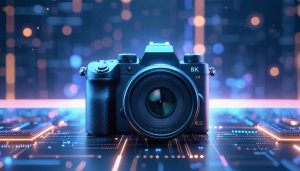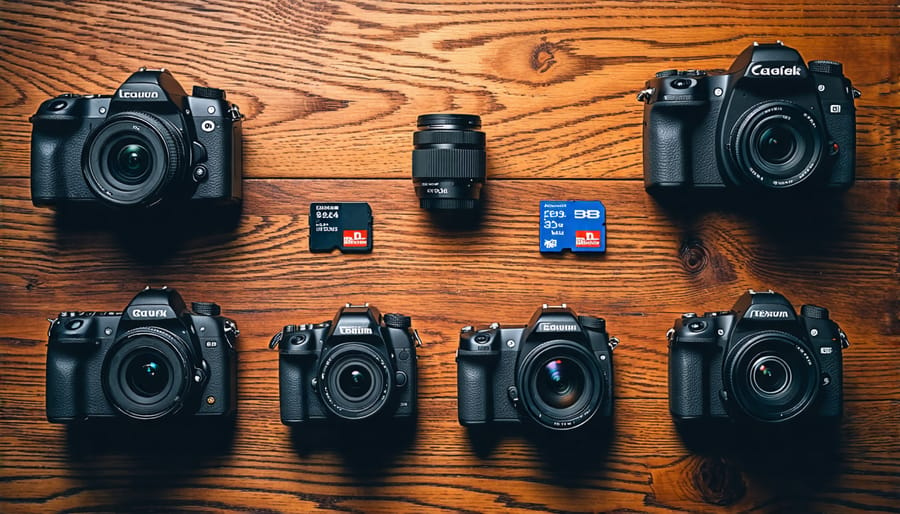
Determine your photography needs, considering factors like portability, ease of use, and desired image quality. Research different camera types – point-and-shoot, mirrorless, or DSLR – to find the best fit for your goals. Prioritize essential features such as sensor size, autofocus system, and low-light performance, while considering your budget. Invest in quality lenses that suit your preferred photography style, as they greatly impact image quality. Don’t forget essential accessories like memory cards, extra batteries, and a sturdy camera bag to protect your gear. Lastly, read reviews, compare specs, and if possible, try out cameras in-store to get a feel for ergonomics and handling before making your final decision. With careful consideration and research, you’ll find the perfect camera to kickstart your photography journey.
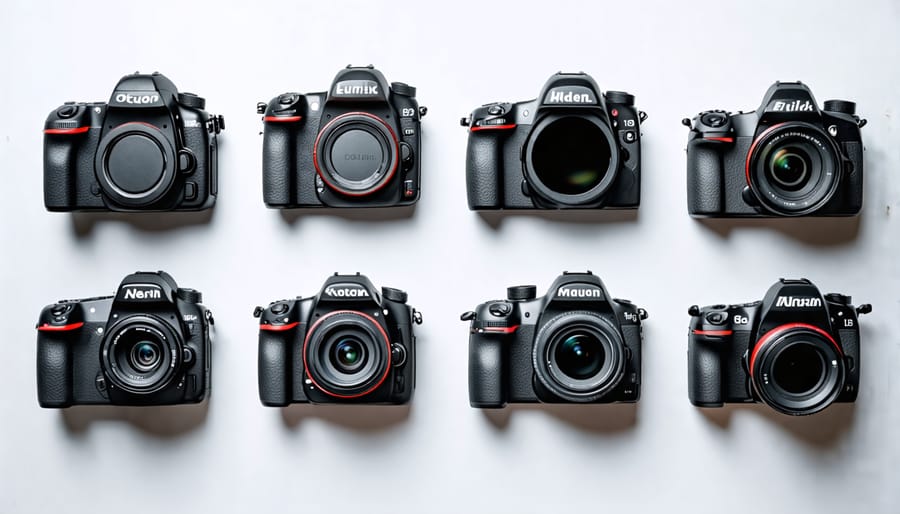
Understanding Camera Types
DSLR Cameras
DSLR cameras offer advanced features and interchangeable lenses, making them a popular choice for serious photographers. Pros include excellent image quality, manual controls, and versatility. However, they can be bulky, expensive, and have a steeper learning curve compared to point-and-shoots. For beginners, consider entry-level models like the Canon EOS Rebel T8i or Nikon D3500. These cameras provide a balance of user-friendly features and room for growth as your skills develop. Look for models with guided shooting modes, built-in tutorials, and comfortable ergonomics. While DSLRs require a higher initial investment, they offer the potential for creative exploration and professional-level results as you progress in your photography journey.
Mirrorless Cameras
Mirrorless cameras have taken the photography world by storm, offering advanced features and excellent image quality in compact bodies. The main advantage of mirrorless cameras is their smaller size and lighter weight compared to DSLRs, making them more portable for travel and everyday shooting. They also offer fast and accurate autofocus systems, high-resolution electronic viewfinders, and the ability to preview exposure and depth of field in real-time. However, mirrorless cameras may have shorter battery life due to their electronic viewfinders and constant live view. They also have smaller lens selections compared to DSLRs, although this is rapidly changing as manufacturers release more mirrorless-specific lenses. For beginners, some of the top mirrorless cameras include the Sony Alpha A6100, Fujifilm X-T200, and Canon EOS M50 Mark II. These cameras offer user-friendly features, excellent image quality, and room for growth as you develop your photography skills.
Point-and-Shoot Cameras
Point-and-shoot cameras offer a convenient and affordable entry point into photography. They’re compact, easy to use, and require minimal setup, making them perfect for casual shooters who want to capture memories without fussing over settings. However, their fixed lenses and smaller sensors limit creative control and low-light performance compared to more advanced cameras. For beginners, consider models like the Sony RX100 series or Canon PowerShot G7 X, which offer excellent image quality and features in a pocketable form factor. Check out our guide to the best point-and-shoot cameras for more recommendations tailored to your needs and budget.
Key Features to Consider
Sensor Size
The sensor is the heart of your digital camera, capturing light to create an image. Sensor size plays a crucial role in determining image quality and low-light performance. Generally, larger sensors offer better image quality because they can capture more light and detail. This means less noise (graininess) in low-light situations and a wider dynamic range, allowing for better detail in both bright and dark areas of the scene. Common sensor sizes include Full Frame (equivalent to 35mm film), APS-C (smaller than Full Frame but larger than most compact cameras), Micro Four Thirds, and 1-inch. While Full Frame sensors provide the best overall image quality, they also come with a higher price tag and larger, heavier lenses. APS-C and Micro Four Thirds sensors strike a balance between image quality, camera size, and cost, making them popular choices for enthusiasts and hobbyists. When choosing a camera, consider your needs and budget to determine the right sensor size for you.
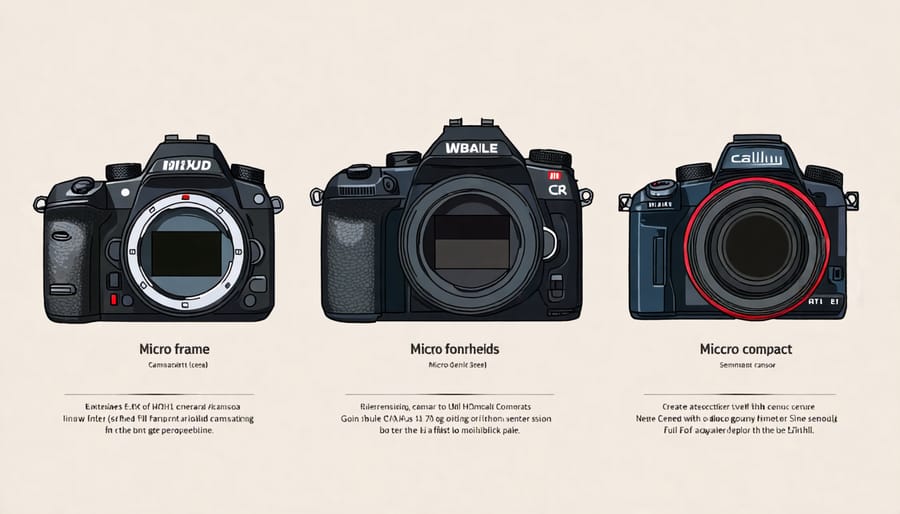
Megapixels
Contrary to popular belief, more megapixels don’t always mean better image quality. While higher megapixel counts allow for larger print sizes, the sensor size and lens quality have a more significant impact on overall image quality. For most beginners, a camera with 12-24 megapixels is sufficient for printing images up to 11×14 inches. Instead of fixating on megapixel numbers, focus on other factors like sensor size, low-light performance, and dynamic range. Remember, a camera with fewer megapixels but a larger sensor can often outperform one with more megapixels and a smaller sensor, especially in challenging lighting conditions.
Autofocus System
When capturing fast-moving subjects or shooting in low light, a camera’s autofocus system plays a crucial role in ensuring sharp, in-focus images. Look for cameras with advanced autofocus technologies, such as phase detection or hybrid autofocus, which combine speed and accuracy. The number of autofocus points also matters – more points generally mean better coverage and tracking capabilities. Consider cameras with customizable autofocus settings, allowing you to fine-tune the system to your specific needs. Touch-to-focus and eye-detection AF are also valuable features for intuitive focusing control and improved portrait photography. Investing in a camera with a reliable, high-performance autofocus system will greatly enhance your shooting experience and help you achieve consistently sharp results.
Video Capabilities
If video recording is a priority, consider cameras with advanced video capabilities. Look for models that offer 4K resolution, high frame rates (e.g., 60fps or 120fps), and slow-motion features for smooth, detailed footage. Pay attention to autofocus performance during video recording, as well as built-in image stabilization to minimize camera shake. Cameras with external microphone inputs and HDMI outputs provide more flexibility for audio and video connectivity. Additionally, consider the camera’s maximum recording time per clip and heat management to ensure uninterrupted recording sessions. Researching these factors will help you find a camera that meets your video recording needs.
User-Friendliness
For beginners, a camera’s user-friendliness is crucial. Look for models with intuitive controls and well-labeled buttons that make navigating settings a breeze. Many entry-level cameras offer built-in guides and automatic modes that help you capture great shots without needing to dive into complex manual adjustments. Features like touch screens, articulating LCDs, and customizable menus further enhance ease of use. Some cameras even provide beginner-friendly shooting modes, such as scene recognition or creative filters, which allow you to experiment with different styles effortlessly. When comparing cameras, consider trying them out in person to get a feel for their ergonomics and menu systems. Remember, a camera that feels comfortable and intuitive to use will encourage you to shoot more often and develop your skills. Don’t be intimidated by advanced features; many beginner-friendly cameras offer room to grow as you progress in your photography journey.
Budgeting for Your Camera
Entry-Level Options
If you’re just starting out in photography and working with a tight budget, there are several excellent entry-level cameras available for under $500. These cameras offer a great balance of image quality, features, and ease of use, making them perfect for beginners. Look for models like the Canon Rebel T7, Nikon D3500, or Sony A6000, which provide a solid foundation for learning photography basics. While they may not have all the advanced features of more expensive cameras, entry-level DSLRs and mirrorless cameras still deliver impressive results. They often come with kit lenses that cover a versatile focal range, allowing you to explore different types of photography. As you grow in your skills and understanding of photography, you can invest in additional lenses or accessories to expand your creative options. Remember, the best camera is the one you have with you, so don’t be afraid to start with a budget-friendly camera and focus on honing your craft.
Mid-Range Picks
For enthusiasts ready to take their photography to the next level, the $500-1000 price range offers a sweet spot of advanced features and performance. Look for cameras with larger sensors, such as APS-C or even full-frame, which deliver superior image quality and low-light performance. Interchangeable lens systems provide flexibility to explore different focal lengths and apertures. Consider models with fast autofocus, high-resolution electronic viewfinders, and 4K video capabilities for versatility in both stills and video. Manual controls and customizable buttons allow for fine-tuning settings to suit your creative vision. Weather-sealing is a plus for shooting in various conditions. Top picks include the Sony a6400, Fujifilm X-T30, and Canon EOS 90D – all delivering excellent image quality, responsive performance, and room to grow as your skills develop. Investing in this range ensures a camera that can keep pace with your ambitions and deliver stunning results.
Trying Before Buying
Before committing to a camera purchase, it’s wise to get hands-on experience to ensure it meets your needs and feels comfortable to use. Many local camera stores offer the opportunity to handle and test various camera models, allowing you to get a feel for the ergonomics, button placement, and menu systems. Don’t hesitate to ask the store staff questions about specific features or to compare different models side by side. Another option is to rent the camera you’re interested in for a short period. This allows you to test the camera in real-world situations and assess its performance in the type of photography you plan to pursue. Renting also provides the chance to try out different best lenses to find the optimal setup for your needs. When testing a camera, take note of factors such as autofocus speed and accuracy, low-light performance, and image quality. Also, consider the camera’s weight and size, especially if you plan to travel or carry it for extended periods. By trying before buying, you can make a more informed decision and avoid the frustration of purchasing a camera that doesn’t suit your photography style or preferences.
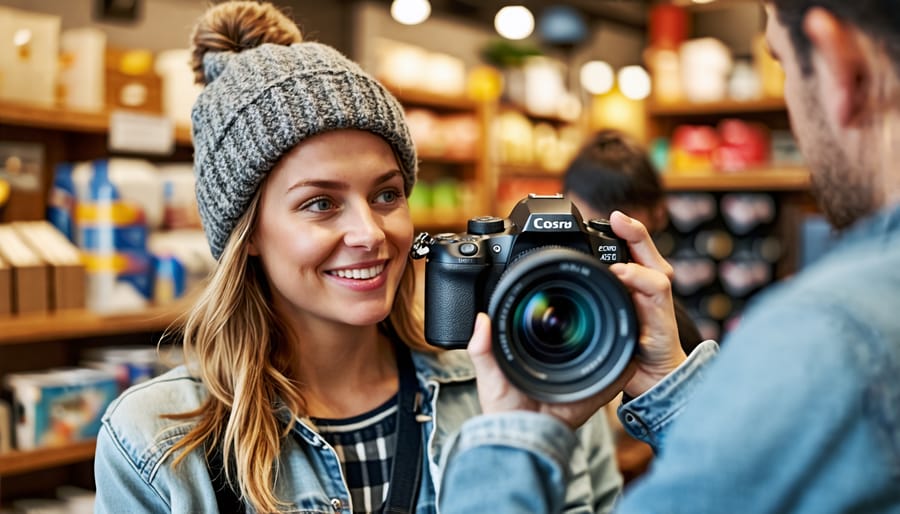
Conclusion
In conclusion, choosing the right camera as a beginner can be an exciting and rewarding experience. By understanding your photography goals, considering your budget, and prioritizing essential features, you can confidently select a camera that will help you grow as a photographer. Remember to focus on image quality, user-friendliness, and the availability of lenses and accessories that suit your needs. Don’t be afraid to start with an entry-level camera and upgrade as your skills develop. Most importantly, have fun exploring the world of photography and capturing the moments that matter most to you. With the right camera in hand and a passion for learning, you’ll be well on your way to creating stunning images and memories that will last a lifetime. So, embrace your creativity, trust your instincts, and embark on your photography journey with enthusiasm and an open mind.

